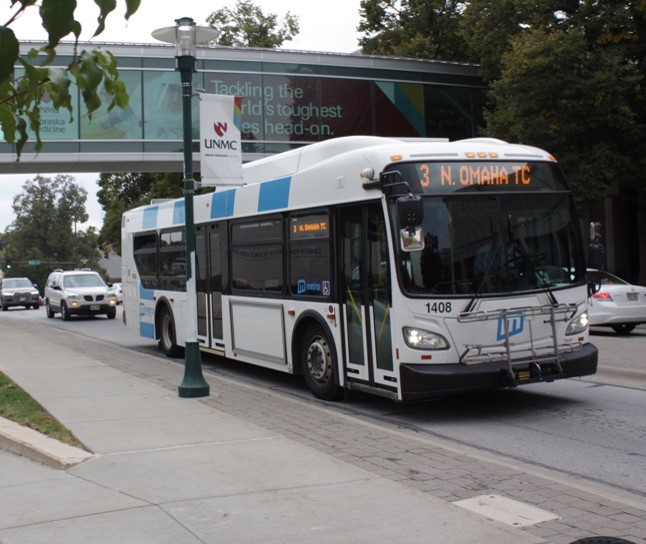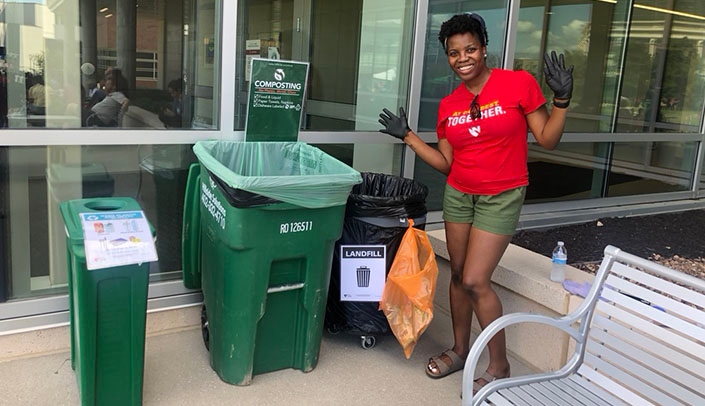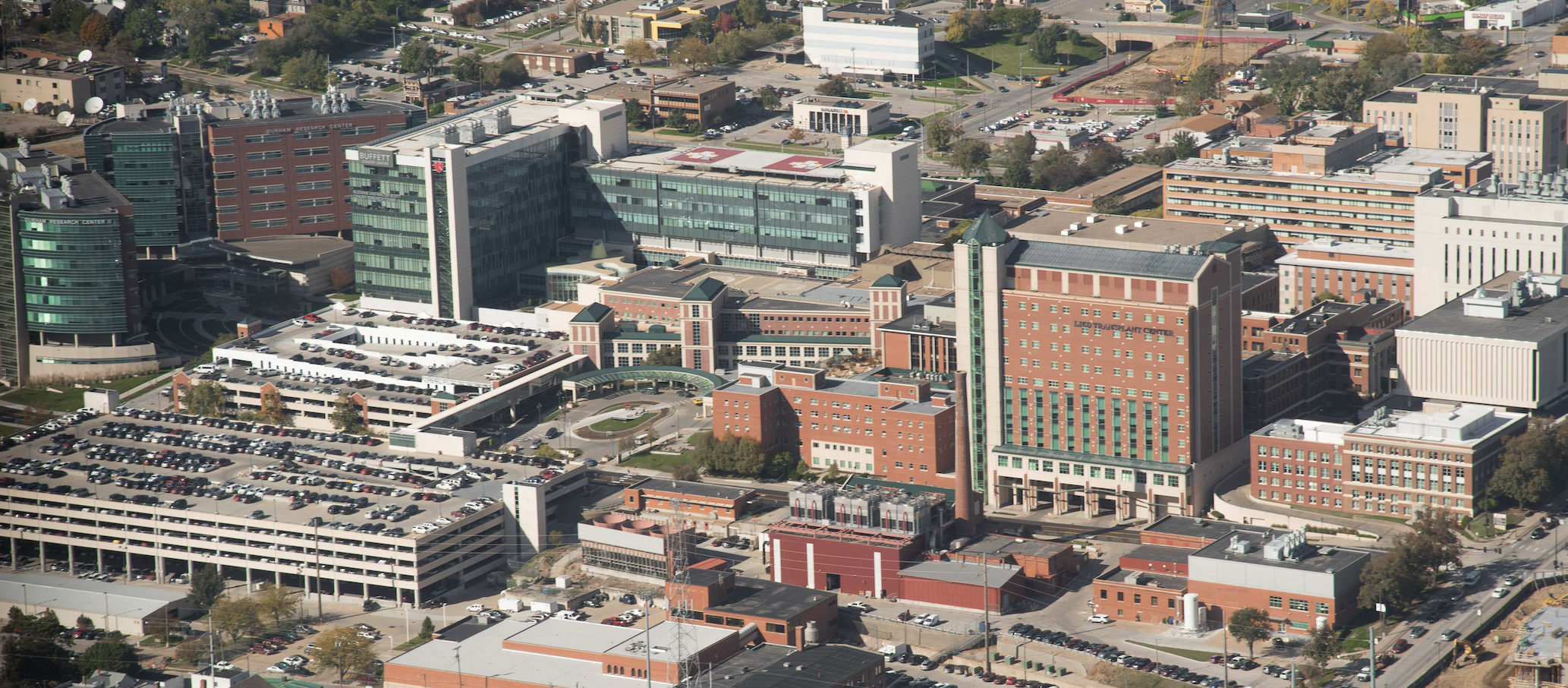Sept. 22 is World Car Free Day

World Car Free Day, which encourages individuals to eliminate the use of their car for a day, will be celebrated on Sept. 22.
Avoiding using a car provides an opportunity to try using active transportation modes, such as biking, walking or taking the bus. Collectively, it demonstrates what our streets and air would look like without cars, congestion and polluting emissions. While going car-free may not be an option for everyone, it’s a chance to reexamine the way we move around our community.
Transportation accounts for approximately 29% of total greenhouse gas (GHG) emissions in the U.S. — the largest contributor. GHG emissions in the transportation sector increased more in absolute terms than any other sector between 1990 and 2019. A majority of respondents to the med center’s 2019 Sustainability Engagement Survey drive between five and 20 miles one-way to get to work, meaning there is an opportunity for individuals at the med center to help reduce emissions.
The good news is that the med center has a great system in place to support employees who can travel to work in ways other than driving alone in a car. The TravelSmart program provides free emergency rides home, free Omaha Metro bus passes, bike/walk infrastructure such as lockers and showers and carpool matching. TravelSmart has helped the med center double its mode split (the percentage of commuters using transportation modes other than driving alone in a vehicle), from 12% in 2010 to 24% in 2019.
This year, consider trying out Omaha Metro’s new ORBT system, which runs every 10 minutes on Dodge Street. OBRT has a stop right outside Clarkson College at 42nd and Dodge streets, and TravelSmart members ride for free. The buses are equipped with WiFi and real time tracking. If you cannot use ORBT to commute, try taking it to lunch this week.
When we reduce drive-alone trips to campus, we reduce the health hazards of our community from car exhaust and often increase steps, improving cardiovascular health. If you are unable to use an alternative way of commuting to work, consider doing one errand this week by biking, walking or using transit. The environment and your health will benefit as a result.
Check out the TravelSmart website to learn more and sign up today.
Back-to-school BBQ limits waste

The UNMC back-to-school barbecue took place two weeks ago, welcoming students and staff back to campus. It was a hot day with around 800 people in attendance to play games, socialize, eat food and listen to fun music. In total, 803 meals were served.
The past two years, this was a zero waste event, meaning at least 90% of all the waste generated in preparation and during the event was diverted from the landfill — either by being composted or recycled. This year, the diversion rate was 71% — slightly below the zero waste threshold. Below are the quantities sent to each end destination:
- Compost: 88 lbs.
- Recycling: 12 lbs.
- Cardboard: 16 lbs.
- Hefty EnergyBag (soft plastics): Five lbs.
- Landfill: 43 lbs.
Of a total of 164 pounds of waste, 116 were diverted. A diversion rate of 71% is pretty high, but there is room for improvement. The wrapping around the food, condiment packets, table covers and other random items could not be recycled or composted, which contributed heavily to the landfill bin. Chip bags and other soft plastics were placed in orange Hefty EnergyBags but were not counted as diverted waste because these materials are not yet being recycled — they are still sent to be burned for energy. The plates, utensils, food, leftover liquids and any wet cardboard was all composted. Water bottles, aluminum cans, plastic cups and cardboard were recycled. Volunteers stood at each waste station and helped students and staff sort their waste into the correct bin, raising awareness and educating the attendees on waste management.
A special thanks to Verdis Group for volunteering their time to help stand by waste stations and weigh the waste at the end of the event, UNMC staff and HEAL volunteers that helped plan and clean up the event afterwards, Sodexo for catering the event and Hillside for providing the compost bins.
Making events zero waste helps the med center reach their goal of creating net zero waste by 2030. You can help at future events by ensuring people are putting their waste into the correct bin and checking out our Zero Waste Event toolkit.
Hot water vs. steam for heating

For the past few years, newer buildings at the med center, such as the Lauritzen Outpatient Center, Davis Global Center, Fred & Pamela Buffett Cancer Center, the UNMC Center for Drug Discovery and Lozier Center for Pharmacy Sciences and Education and more, have begun using hot water to heat their buildings instead of steam.
Steam and hot water are both the most common types of boiler heating systems. Steam boilers are known to be more traditional. They use energy to heat water to a boiling point, and the steam then travels through networks of pipes to different radiators to heat the building. A hot water boiler goes through the same process as steam but instead stops heating once the water is at a hot-enough temperature. Steam boilers still are necessary during cold months in the Midwest, but specifically during energy curtailment months and most other months throughout the year, hot water can be used to heat the majority of the med center’s buildings.
Using hot water instead of steam has many benefits. It is more energy efficient, safer and cheaper. Water can be controlled more easily than steam, since steam is a gas that has more particles, making it harder to balance and send in the right path, whereas water is easily directable. The water being used also doesn’t have to be heated to boiling temperatures, creating a much safer environment. Since less energy and water is needed, using hot water is the most cost-effective option.
The UNMC Center for Drug Discovery and Lozier Center for Pharmacy Sciences and Education had a 45% reduction in energy use by using hot water instead of steam, equaling a cost avoidance of $45,000 just from 2017 to 2020. Many other buildings on campus had similar energy reduction and cost avoidance data. The med center will continue saving in the future by switching to hot water, because steam costs have continued to rise.
Moving toward this newer heating technology helps the med center reach its 2030 sustainability goals. Using hot water to heat buildings reduces emissions and the amount of water needed. Reducing emissions and water use positively impacts the environment and population by not contributing as much to air and water pollution.
Takeaways from the report on climate change

On Aug. 9, the Intergovernmental Panel on Climate Change (IPCC) released the Sixth Assessment Report on Climate Change — a “code red for humanity,” according to United Nations Secretary-General António Guterres. Below are some key takeaways.
Earth is on track to cross the critical 1.5°C threshold within 20 years
Earth’s climate is warming faster than scientists previously thought, and even if nations sharply cut greenhouse gas emissions, total global warming will reach 1.5°C within the next 20 years. The 1.5°C increase is the critical threshold defined in the Paris Agreement to prevent the worst effects from climate change. If this 1.5°C increase occurs, we can expect to see an increase in climate impacts such as sea level rise, declining biodiversity, fishery and crop decline and rising poverty, as well as many other health-related impacts.
Warming is “unequivocally” due to human activity
“It is unequivocal that human influence has warmed the atmosphere, ocean and land,” causing widespread and rapid changes, the report said.
We can still prevent the most dire climate hazards
We must take drastic action now in order to stave off the most dire climate outcomes. Doing so will require a coordinated effort among nations to rapidly shift away from fossil fuels and eliminate greenhouse gas emissions.
How is health related to climate change?
According to the World Health Organization (WHO), climate change is expected to be responsible for 250,000 deaths per year between 2030 and 2050. Key health threats of climate change, according to the WHO and the CDC:
- Heat stress, as seen in the recent heat waves in the Northwestern states
- Waterborne and vector-carried diseases, for which a warmer climate means a wider geographic and seasonal distribution
- Air pollution, which is associated with diminished lung function, asthma and premature deaths
Health organizations like the medical center play a key role in providing the quality care and support needed for the communities to face the effects of climate change.
How the medical center is doing its part
The UN report emphasizes the importance of large organizations achieving their sustainability goals. The med center is striving to be carbon neutral by 2030, alongside a number of other goals. Visit the med center’s dashboard to find out more.
Resources for individuals
- LiveGreen website
- Count Us In’s list of 16 actions
- United Nations individual action site
National Honey Bee Day

This Saturday, Aug. 21, is National Honey Bee Day. Did you know that honey bees are responsible for one in every three bites of food we eat?
Honey bees account for 90% of the pollination required for our crops to grow and are responsible for more than $1 billion in agricultural productivity within the U.S. Not only do bees contribute to most of the food we eat, they also:
- Help create medicines and raw materials;
- Provide food for wildlife;
- Keep waterways clean;
- Prevent soil erosion;
- Help with the production of oxygen; and
- Absorb CO2, which helps mitigate climate change and keep our air clean.
We can all help save the bees. In 2020, the med center received a grant to replace turf grass with native plants that help support pollinators like honey bees. Take a walk over to the lower level of parking lot 16, between the Truhlsen Eye Institute and Home Instead Center for Successful Aging, to check out the prairie and see some pollinators in action.
Despite the country’s massive reliance on honey bees in agriculture and other systems, these bees are declining at an alarming rate. In 1988, there were around 5 million hives in the U.S.; today there are only 2.5 million. The decline of honey bees can be attributed to several different factors: parasites, pesticides, habitat destruction, air pollution and climate change. If honey bee populations continue to decline toward extinction, many of our everyday necessities will no longer be available, and our health will be in jeopardy. We won’t have access to food we eat every day and medications we use, there will be much more air pollution, and the environment will experience huge shifts within all ecosystems.
National Honey Bee Day is an opportunity to recognize how much honey bees do to sustain our ecosystems, protect natural resources and ensure human health. It’s also a day to appreciate all of the beekeepers and honey bee associations that help support these important pollinators.
Some ways you can help save the bees in your own life include: avoiding pesticides and fertilizers, providing more trees and bee gardens in your yard, helping local beekeepers and organizations and educating others on the importance of bees. Check out this blog from City Sprouts to find out more about how you can help.
Shutting the fume hood sash saves energy

If you spend time in a lab, you have an opportunity to help reduce a significant amount of energy during the hot summer months — and all year round.
Fume hoods that are left open when not in use consume the same amount of energy as 3.5 homes in a day, and the ventilation can account for half of all energy used in a lab. Not only does closing the fume hood conserve UNMC’s energy and reduce environmental impact, it also:
- Ensures safety of self and colleagues
- Saves the university at least $700,000 to $900,000 annually by ensuring the air exchange system runs efficiently
- Limits the amount of conditioned air that exits the building
- Prevents alarms from being triggered in the evening for some research buildings
Fume hood sashes are usually see-through panels that open and close to let air in and out. When a fume hood sash is open, it essentially creates a large hole in the lab’s wall that leads directly outside, using a significant amount of energy. This is important because it filters out noxious fumes so the air in the lab doesn’t get contaminated, but when the fume hood is not in use, there is no need for it to be filtering clean air.
Check out what some of your colleagues have to say about the importance of shutting the fume hood sash:
“If you care about reducing our energy footprint, which means helping both the environment and our bottom line, please shut the sash of your fume hood when it is not in use!” – Jennifer Larsen, MD, vice chancellor of research
“By shutting the fume-hood sash, med center colleagues not only can ensure safety and significantly reduce energy use but also save money. If a fume-hood sash is left open, the exhausted air must be replaced with fresh air, which in turn must be heated or cooled, all of which uses energy. The med center could save nearly $1 million every year by shutting the sash and ensuring our air systems run efficiently.” –Andrew Balus, facilities management and planning
New “Shut the Sash” stickers are being put up in UNMC labs this week and next week. If your lab still needs new stickers or you would like to put up posters, please email LiveGreen.
Med center receives Better Buildings Award

UNMC and Nebraska Medicine have been awarded the 2021 Better Buildings Goal Achiever Award. Better Buildings is an initiative of the U.S. Department of Energy designed to help drive leadership in energy innovation. Better Buildings Goal Achievers are leaders in energy efficiency and stand as an example for their peers in the public and private sectors as organizations who have met their sustainability commitment(s) within 10 years.
In 2016, the med center committed 6.8 million square feet of building space to the Better Buildings challenge. As part of the challenge, the med center committed to a goal of 20% reduction in water use intensity by 2022. This year, that goal was exceeded, with a 23% annual reduction in water consumption.
This was achieved by:
- Replacing non-recirculating cooling systems on freezers, MRI, and electron microscopes.
- Repairing faucet aerators and switching to high-efficiency faucets.
- Installing high efficiency toilets and urinals.
- Updating water fountains with bottle refill stations.
- Improving cooling tower efficiency.
Along with the med center’s commitments to the Better Buildings challenge and goals, it has committed to achieving a number of other sustainability goals by 2030. These include becoming carbon neutral (net zero emissions), achieving zero waste and using less water than what falls on the Omaha campus yearly during average rainfall (currently 104 million gallons). Check out the progress and projects being implemented to achieve these goals.
By pursuing the 2030 goals and being a part of programs like the Better Buildings Challenge, the med center is striving to have a positive impact on the planet and therefore creating a healthier environment for all people to live and thrive. Everyone’s actions on campus help to achieve these goals. Here are some simple ways you can help each day at work or at home.
Energy curtailment continues

Energy curtailment — when colleagues and students are asked to help the campus by using less energy on days when the combined heat and humidity put extra stress on campus energy systems – has returned.
This week is another hot one, and the medical center has been and will continue to be in and out of curtailment throughout the summer.
By using less energy on curtailment days, we:
- Ensure continuity of essential systems for critical hospital and research functions;
- Reduce pollution;
- Improve the health of the entire community; and
- Help to save money — both now (consumption) and for the next 12 months. The next year’s electrical rate is based on our maximum usage at any given point in time. This is always important, but especially now, as budgets are tight.
So what simple things can you do to help?
- Close shades, blinds and curtains whenever possible to reduce solar heat gain;
- If you are on campus but your neighbors aren’t, please help by closing their window coverings and turning off any lights or equipment you can.
- Lower lighting levels where possible, turn off lights in unoccupied areas and when leaving a room;
- Turn off and unplug all electrical equipment not in use (computers, coffee makers, printers, chargers, etc.);
- Shut fume hood sashes when not in use;
- Open doors manually instead of using the ADA buttons if possible;
- Take the stairs instead of the elevator; and
- Tell others.
Updated technology has allowed us to control curtailment better. It is possible that spaces will get warmer as the day goes on, but there shouldn’t be freezing spaces, as colleagues have requested. For a full explanation, please visit the Energy Curtailment page.
Spaces are not controlled individually; the system cools larger areas. So while the med center has a temperature range to maintain, it’s possible your space may not be the exact temperature you want. Only call 2-3347 (Nebraska Medicine) or 9-4050 (UNMC) to report spaces colder than 66 degrees or warmer than 78 degrees.
Patient care and research spaces are not affected by energy curtailment.
Design guidelines improve sustainability

Building design, including the construction, demolition and planned operations of spaces, is an important topic in the field of sustainability. Building design impacts greenhouse gas emissions, water use, waste management and even active transportation.
“Green” buildings take into consideration the health and safety of their occupants as well as the building’s impact on the environment. In 2020, the medical center revised its building design guidelines for new construction and major renovations. This revision process included enhancing the med center’s sustainability criteria. These changes in designing, constructing and operating spaces will help the med center reach its 2030 sustainability goals and will create a safer, healthier workplace for colleagues.
With these new requirements, all building design projects over $1 million must meet the requirements for Leadership in Energy and Environmental Design (LEED) v4 Gold Certification. While formal certification is not required, the framework and criteria needed to achieve LEED v4 Gold raises the bar for design processes, practices and building performance. Buildings designed to LEED standards have cleaner air (both inside the building and out), more natural lighting and fewer harmful chemicals. According to the U.S. Green Building Council, “improving indoor air quality can reduce absenteeism and work hours affected by asthma, respiratory allergies, depression and stress, and leads to and self-reported improvements in productivity”.
Below are just a few of the sustainability requirements in the new guidelines:
- Sustainable sites
- Harvest 95% of rainwater on site with green infrastructure and low impact development strategies
- Reduce heat island effects and light pollution
- Energy
- Demonstrate via energy modeling that the project achieves the Med Center’s energy targets
- Water use
- Reduce indoor potable water use by 35%
- Provide water filtration for potable sources
- Reduction of water use outdoors by at least 50% using the EPA’s WaterSense Water Budget tool
Webinar Thursday
To hear more about sustainable building design and its positive impacts on health and the planet, attend a LiveGreen webinar on Thursday, July 22, from 11 to 11:30 a.m. Lindsay Neemann, whose team has been leading the charge in creating and implementing the med center’s Green Design Guidelines, will discuss the sustainability features included in new construction, as well as the general process for incorporating sustainability into architecture projects. Join here at 11 a.m. Thursday.
World Population DaY

Last Sunday, July 11, was World Population Day. This day was first recognized in 1987 to bring awareness to the importance of population issues. There are currently 7.8 billion people in the world, and the population is projected to continue growing until 2100.
Instead of looking at the issues surrounding the growing population, we can look at some opportunities.
With a growing population comes more motivation to protect the environment. Currently, Earth’s Overshoot Day is July 29, meaning by that day humanity has consumed “nature’s budget” for the year. As natural resources are being depleted at a faster rate than ever before, and our land and oceans are increasingly polluted, consuming less is critical.
The good news is, there are plenty of ways individuals can help make a collective impact. Use this ecological footprint calculator to estimate your own impact and discover ways to reduce your footprint, including:
- Using public transportation, carpooling or riding a bike;
- Eating locally grown food and consuming fewer animal-based products;
- Adopting energy efficiency practices, like turning off lights when not in use or purchasing appliances with Energy Star labels; and
- Recycling or composting instead of sending trash to the landfill.
By reducing your footprint, not only are you helping the environment and the future population, but your own and others’ health. For example, biking and walking reduce your chance for heart disease, diabetes and cancer. By choosing more locally produced non-processed foods, you’re consuming less saturated fat, sugar and salt, which reduces your risk of stroke, diabetes and many different cancers. And all of the strategies above help reduce air pollution and emissions, which means lower risk of respiratory disease and a healthier environment.
World Population Day reminds us that there are billions of people on Earth. By lowering your carbon footprint, you’re helping ensure there are resources for everyone, now and into the future. Check out this list of organizations that are working to solve population issues, and learn more about how population growth impacts our planet.
